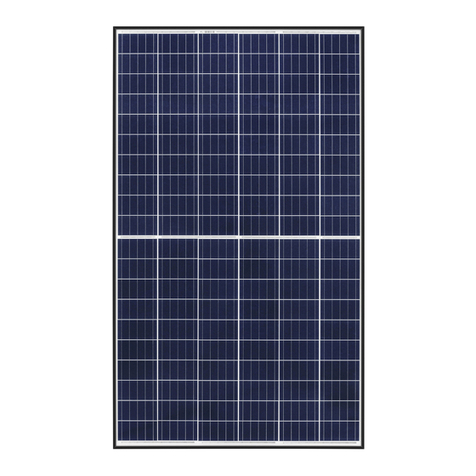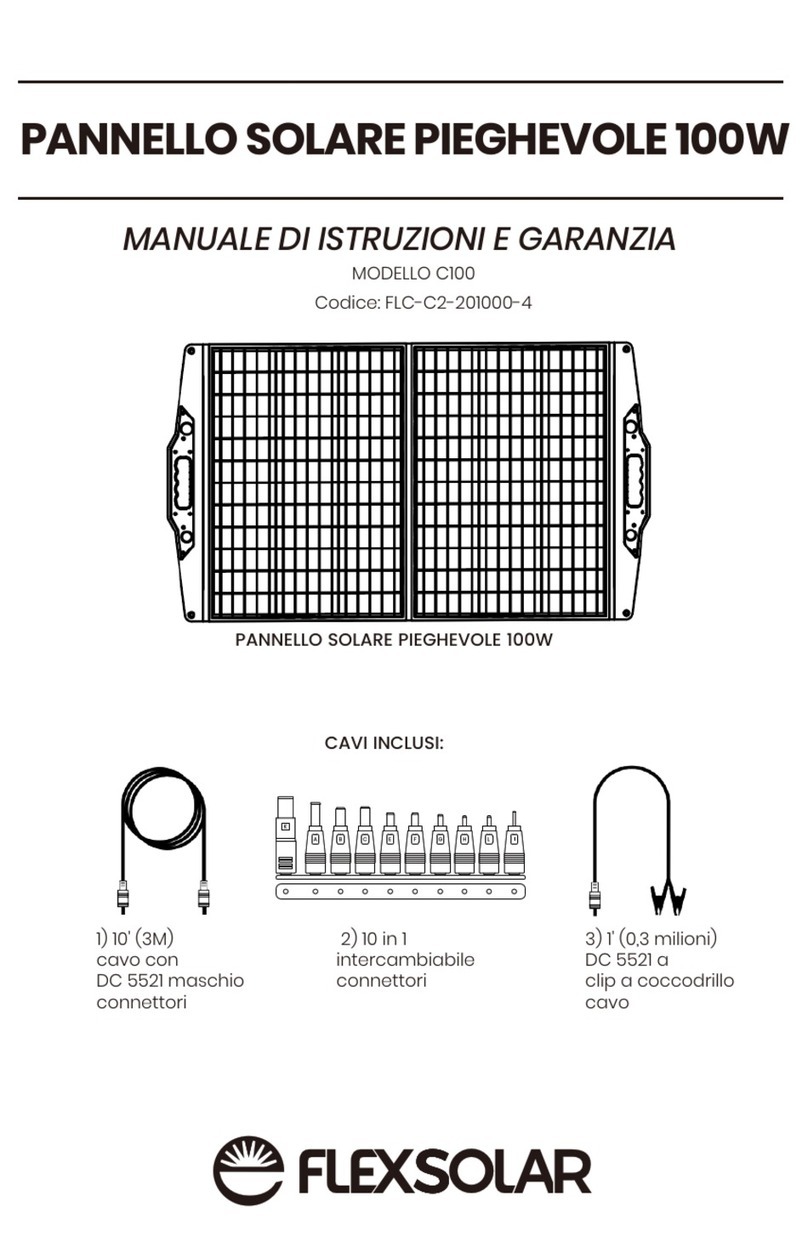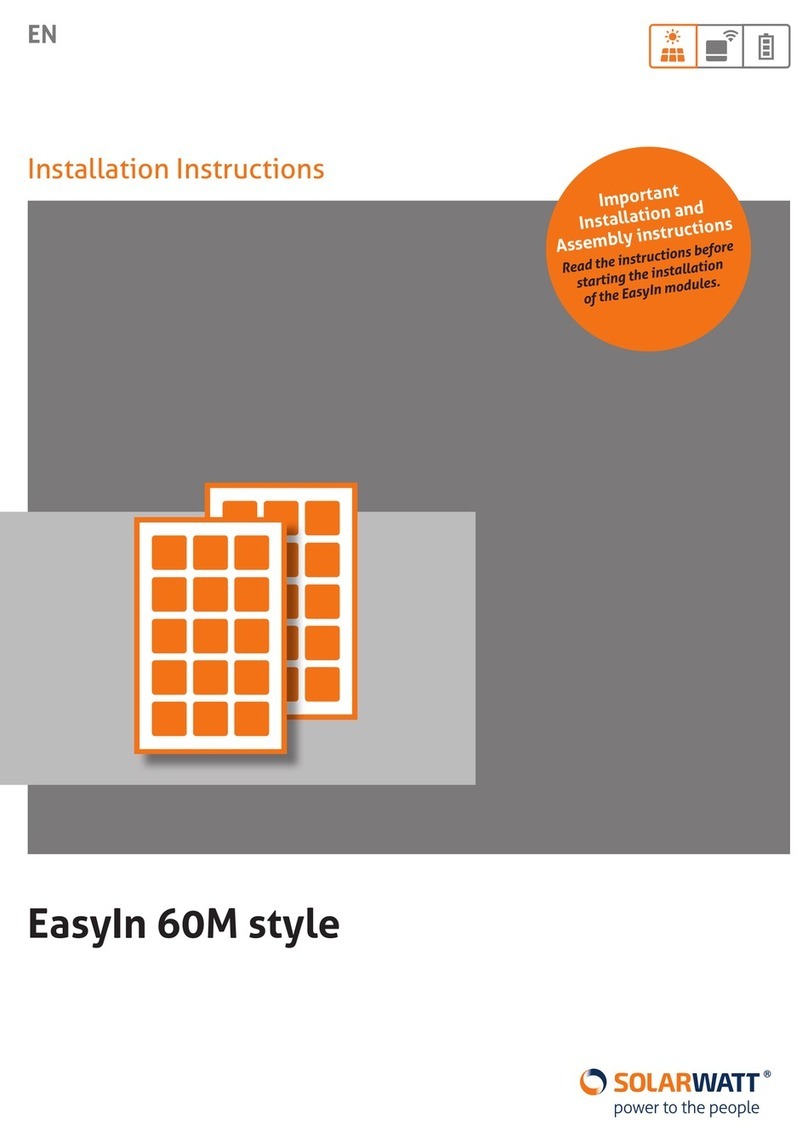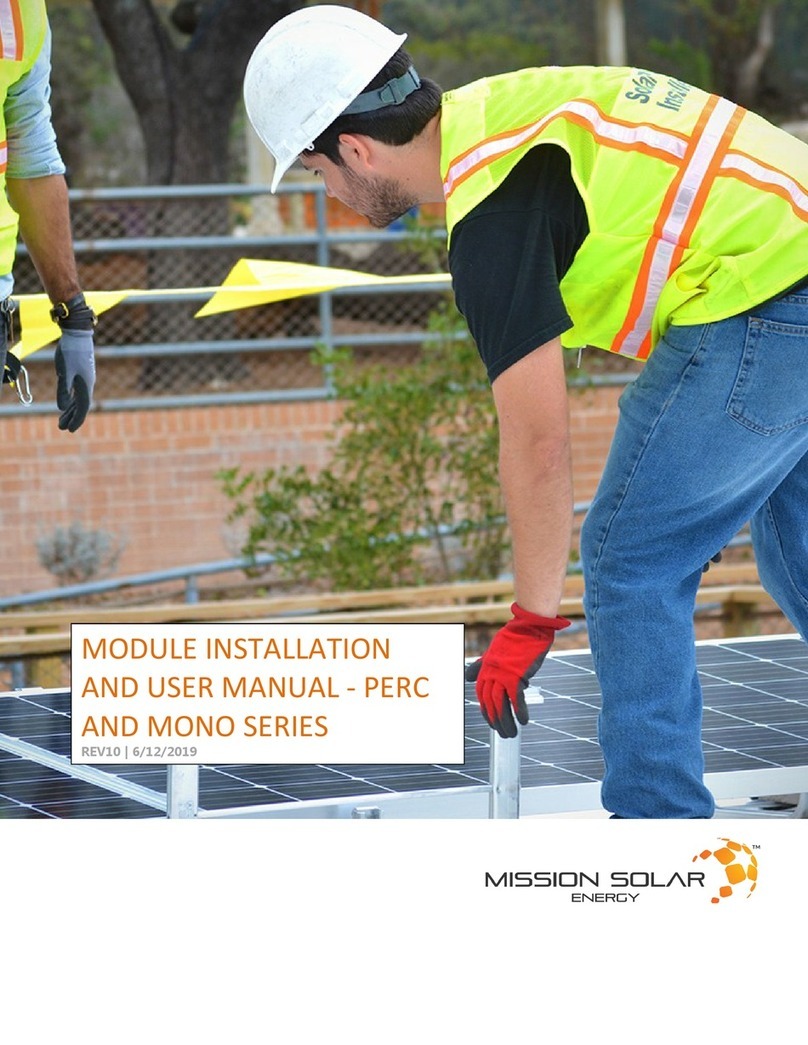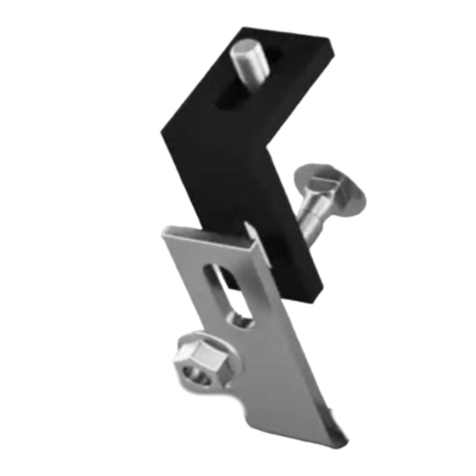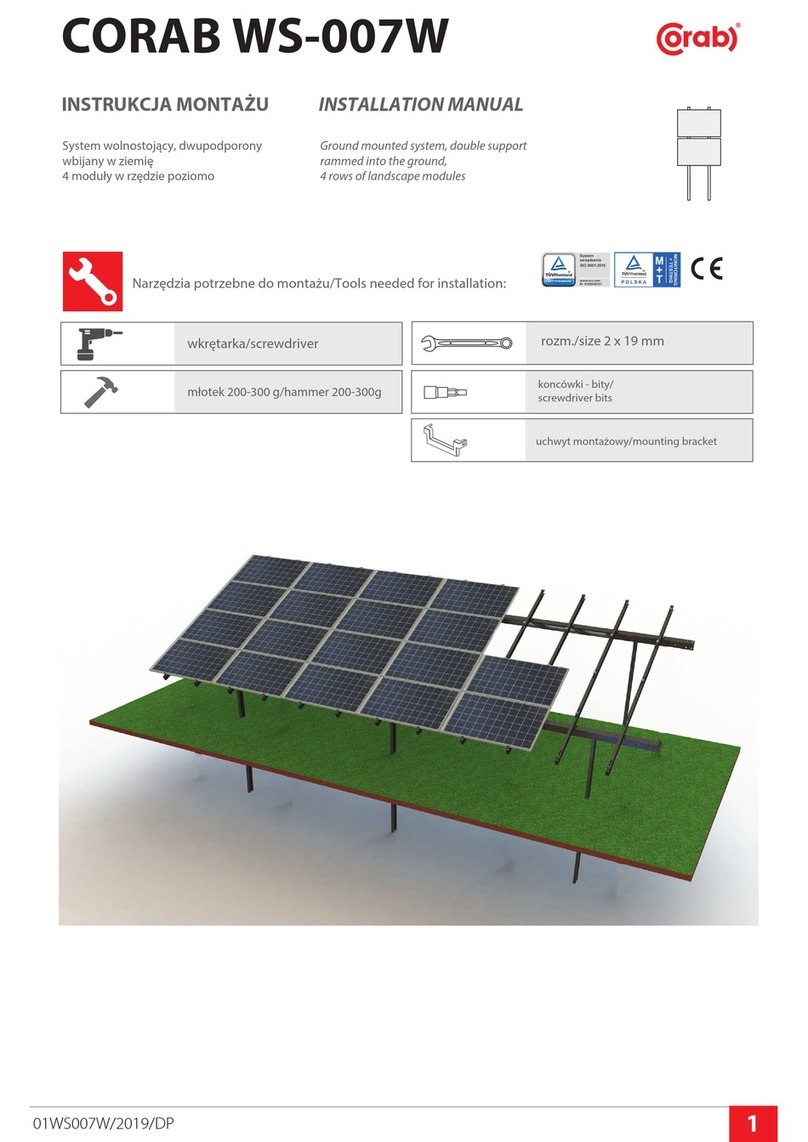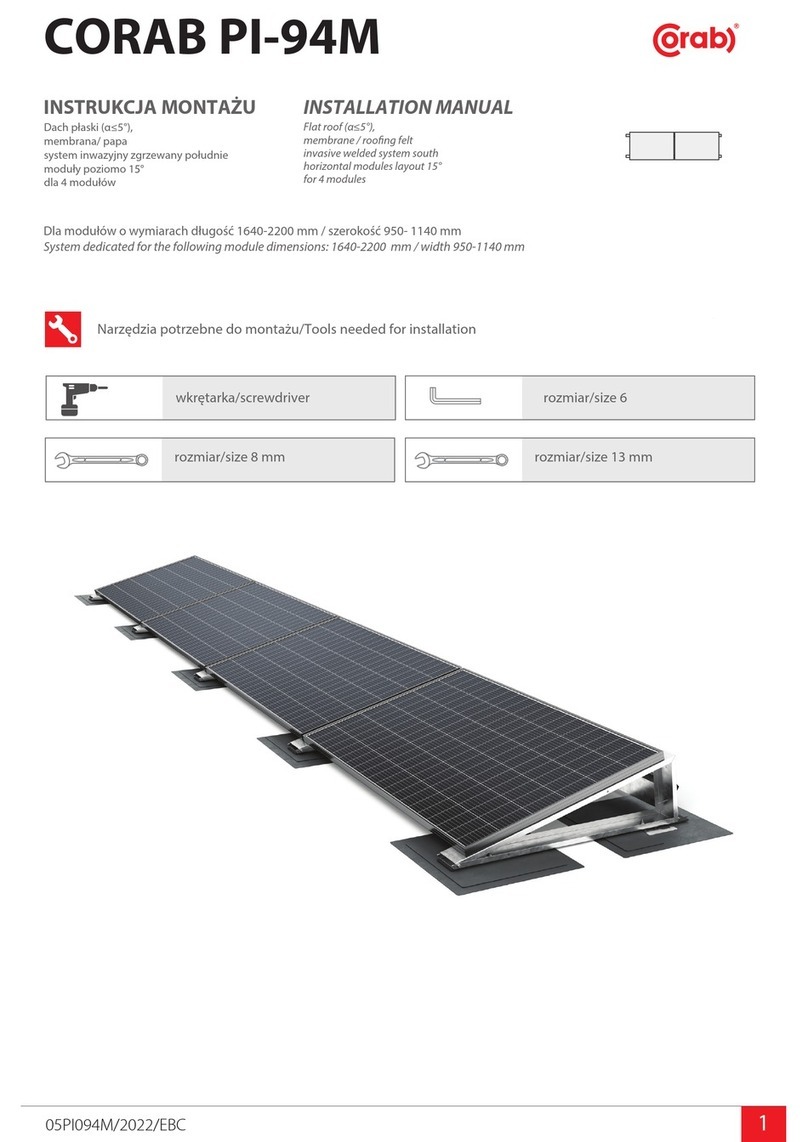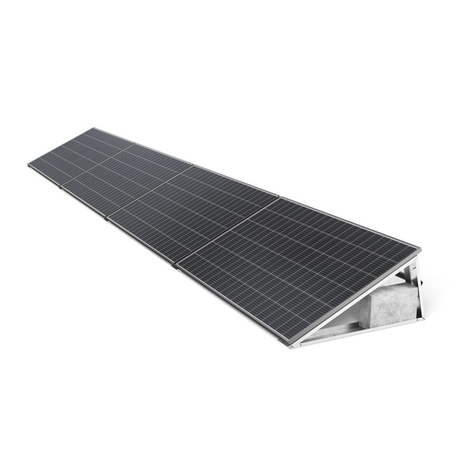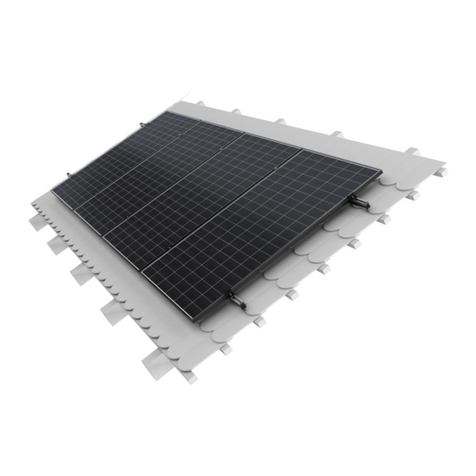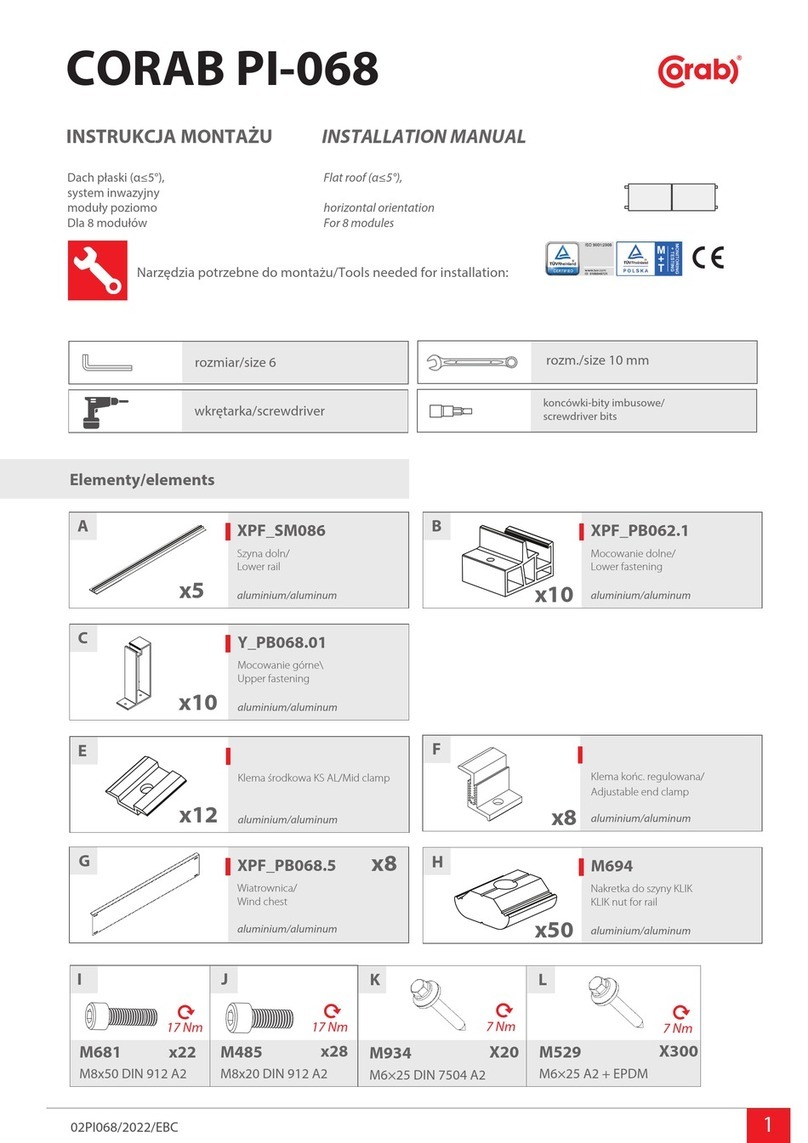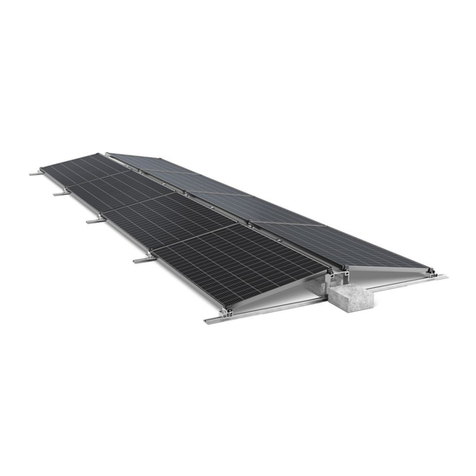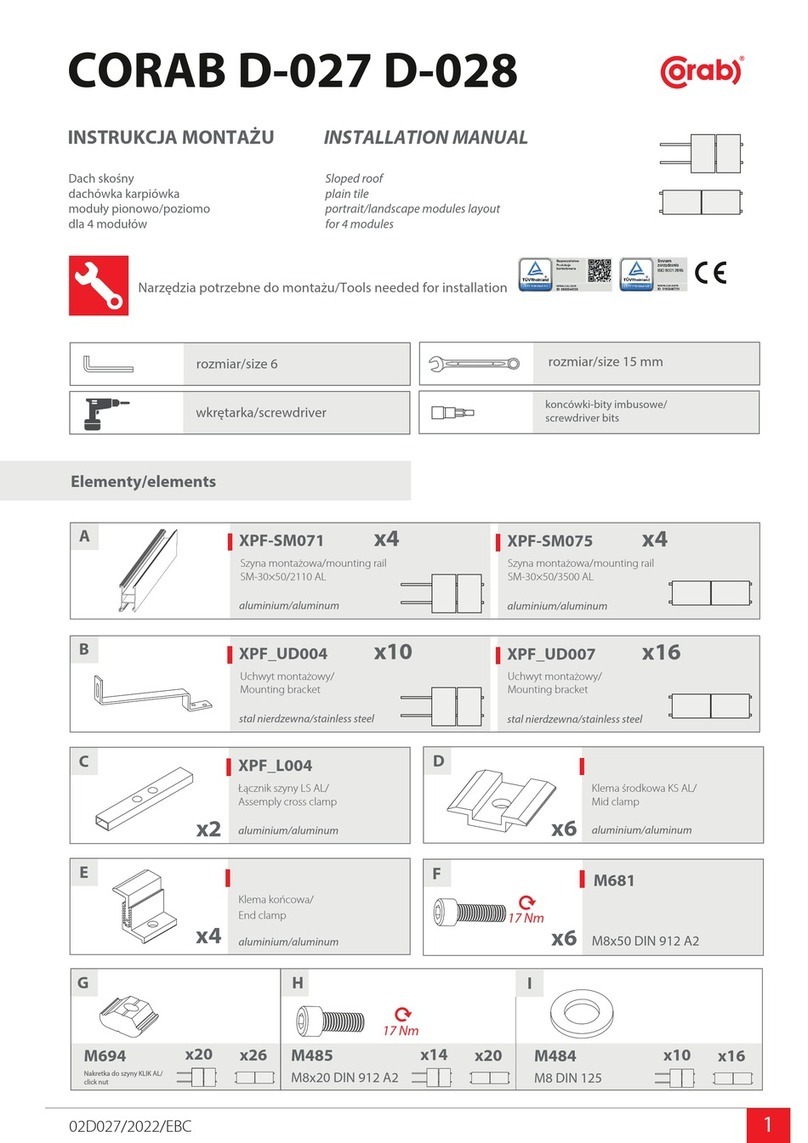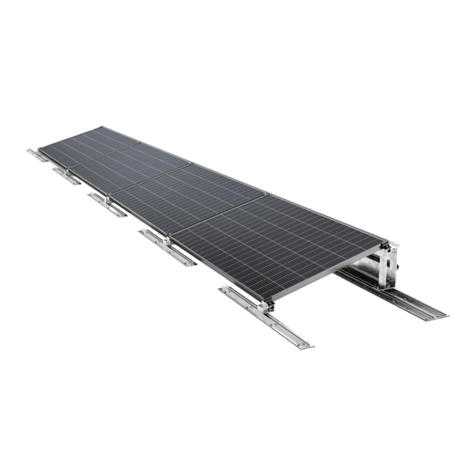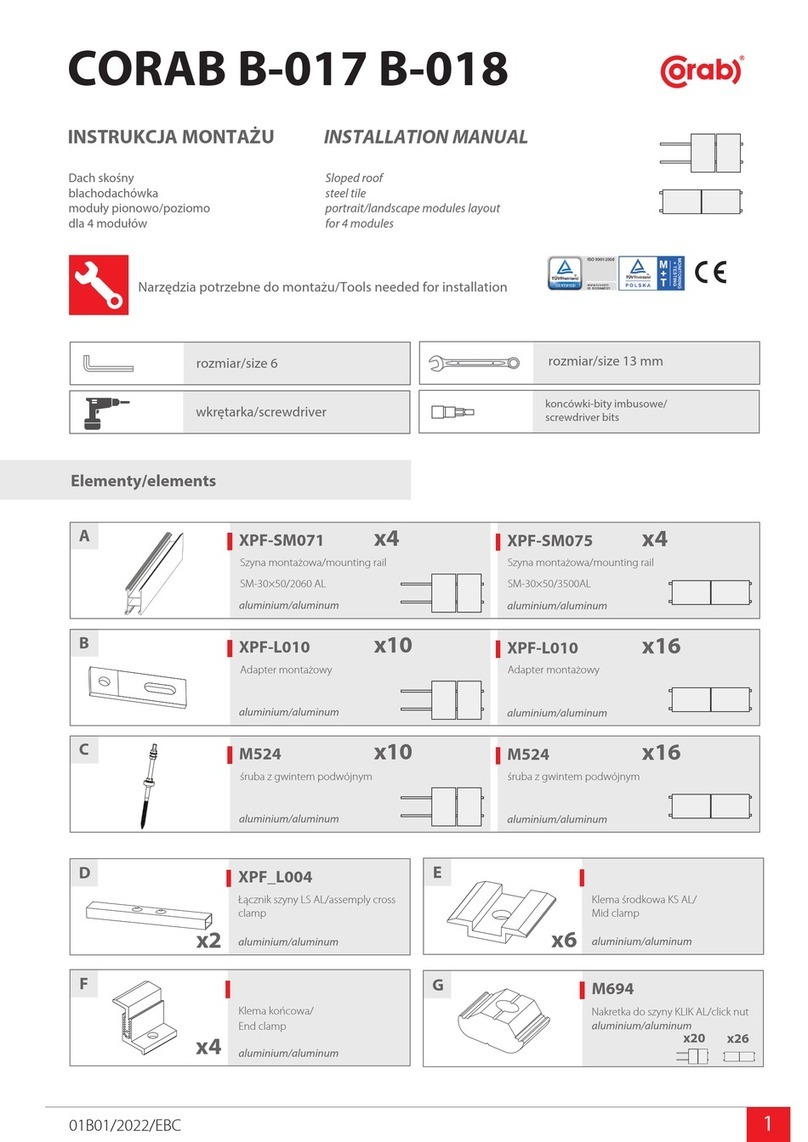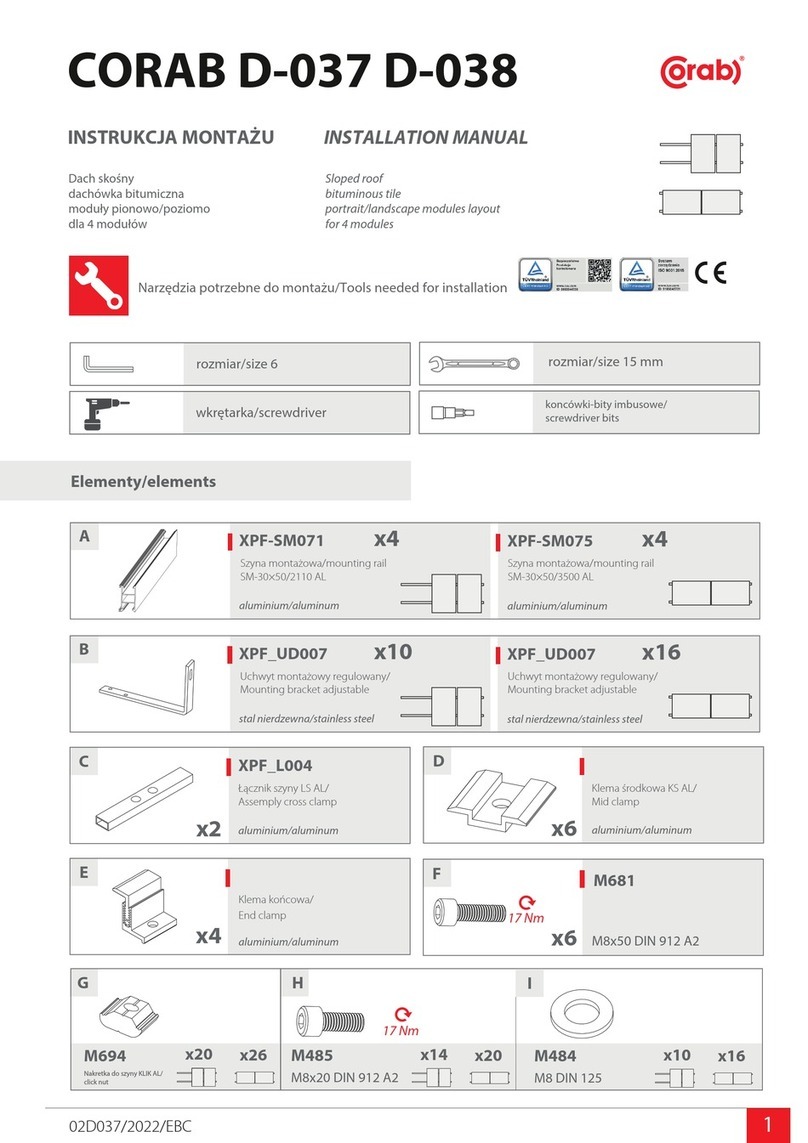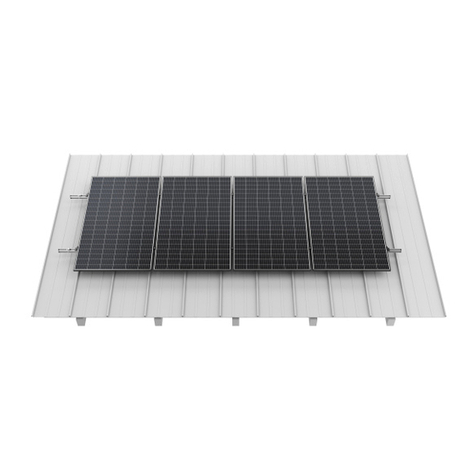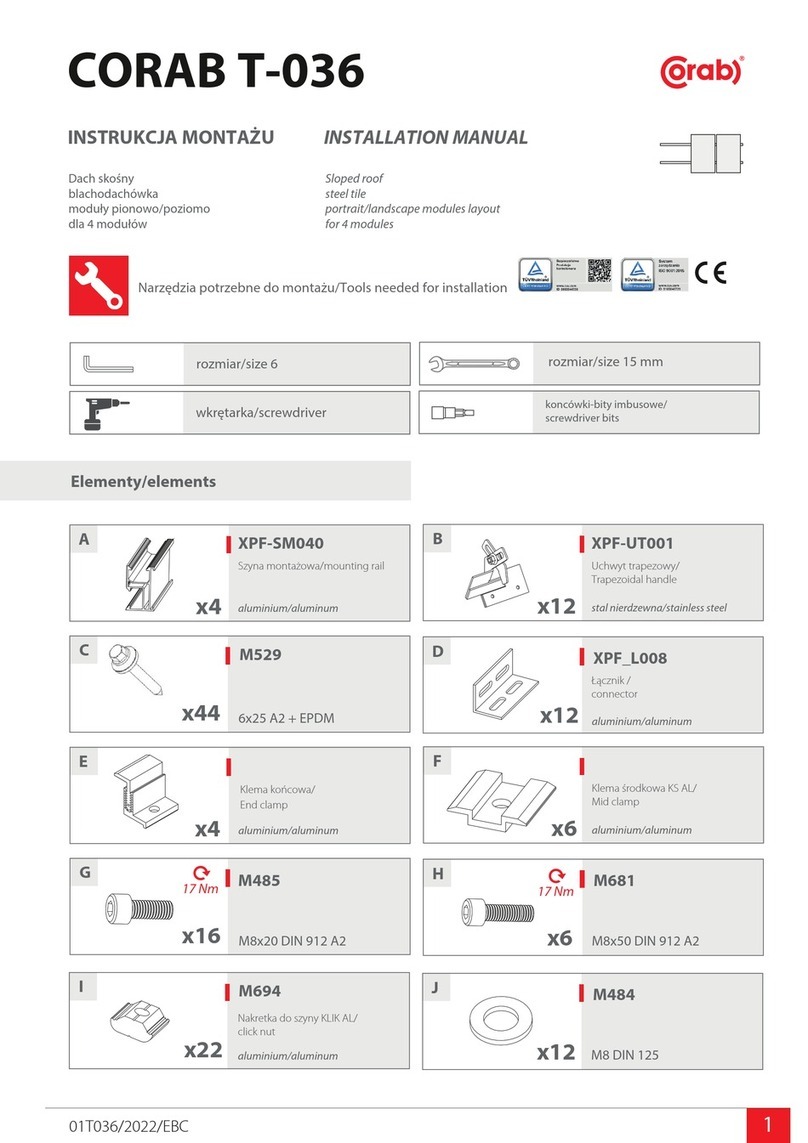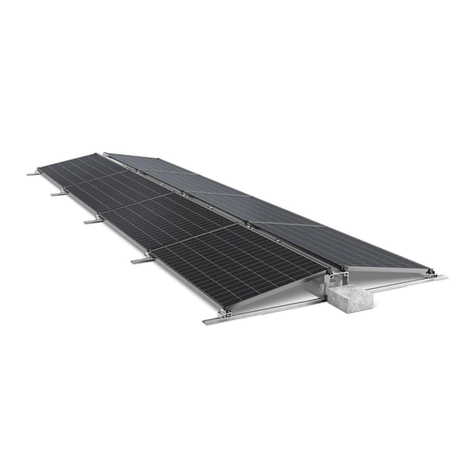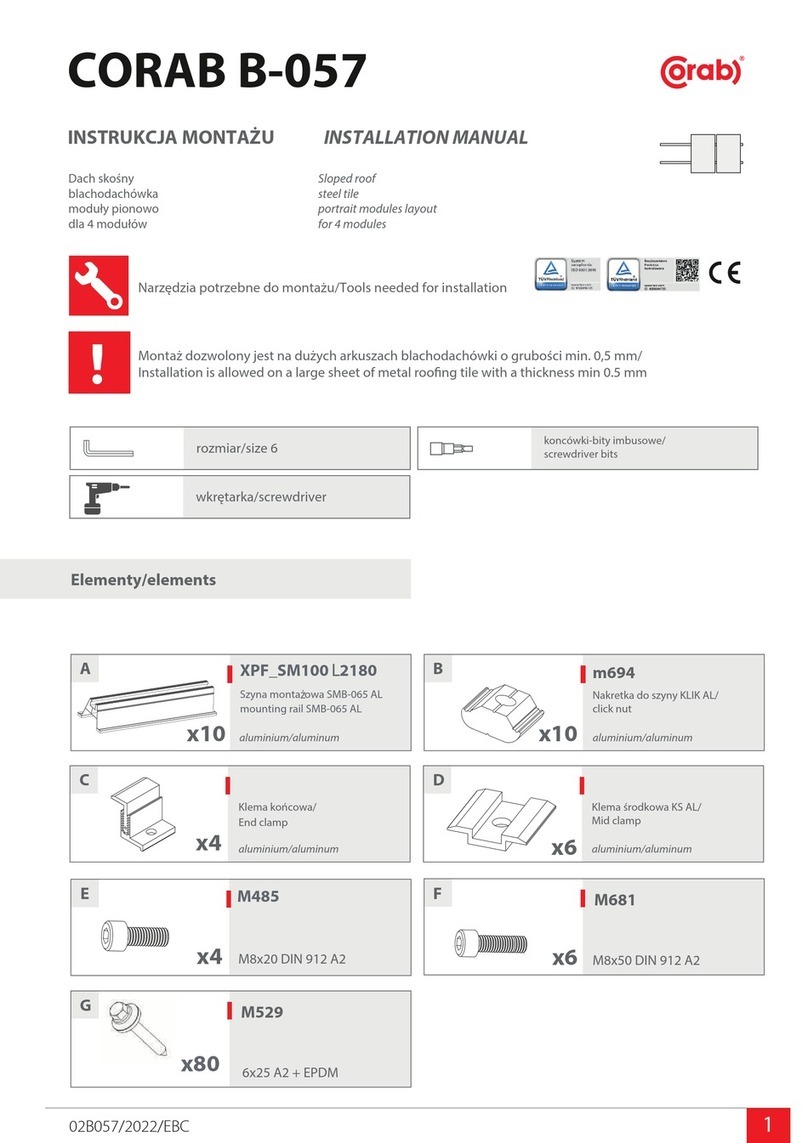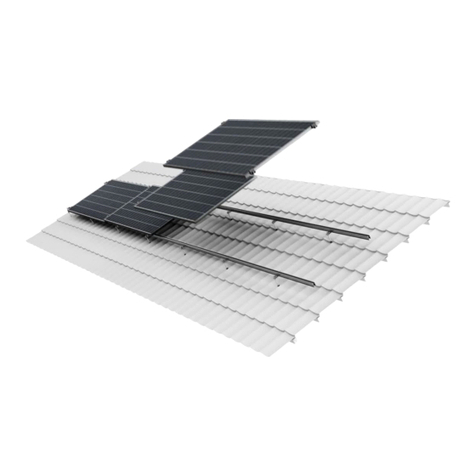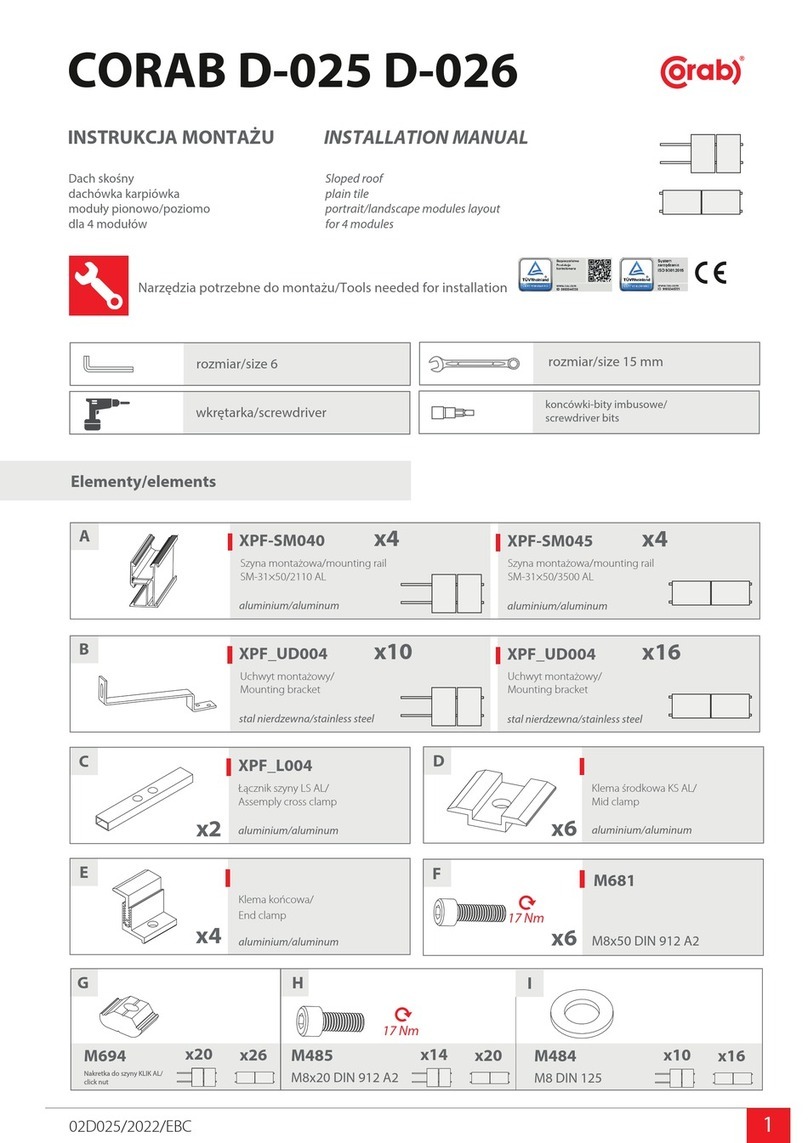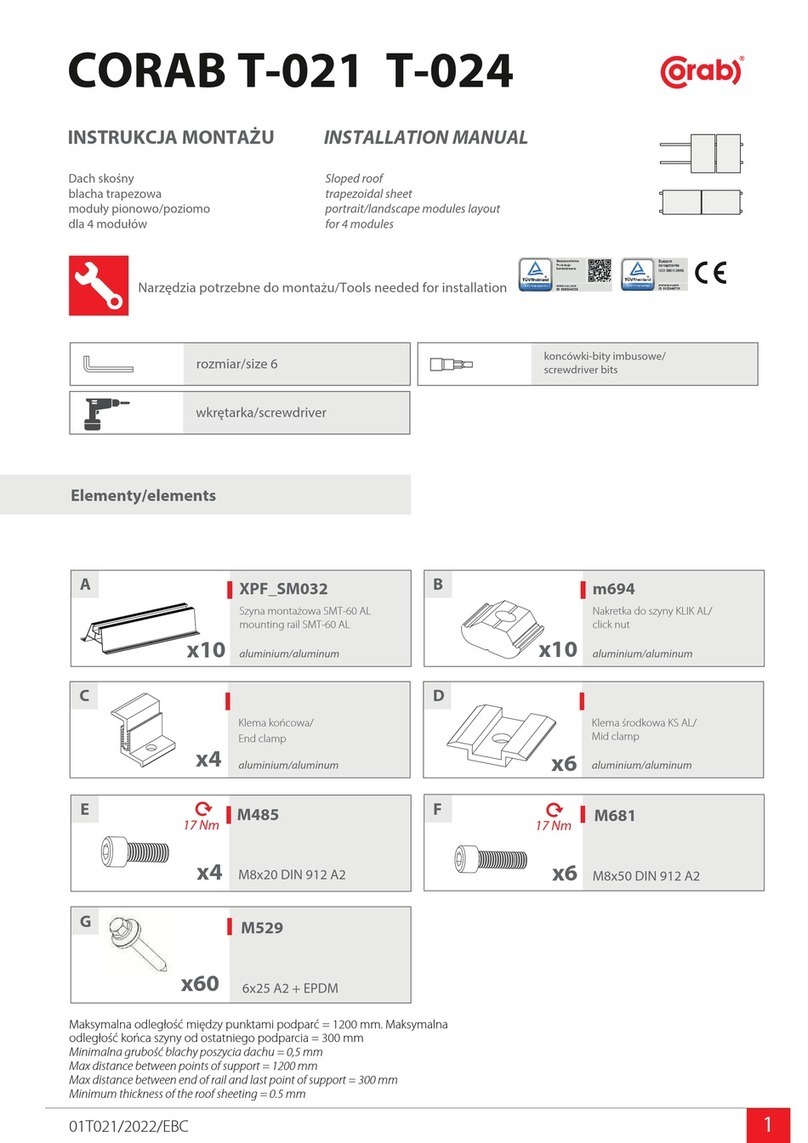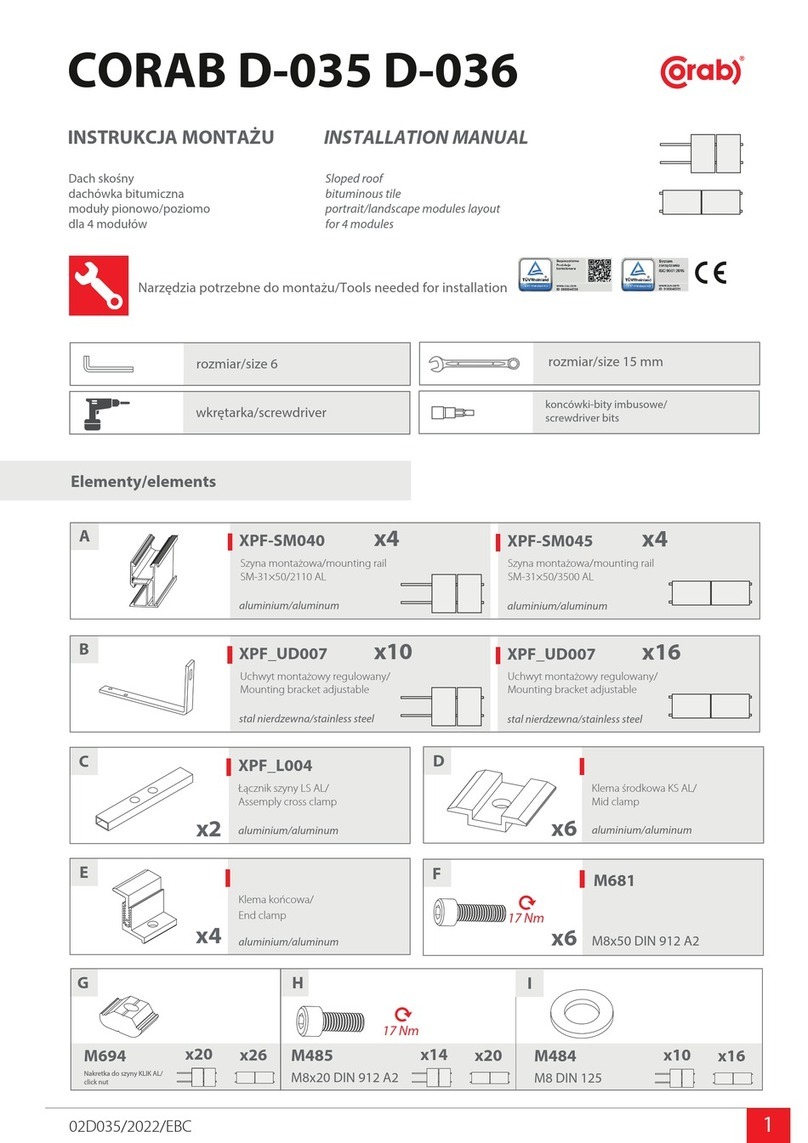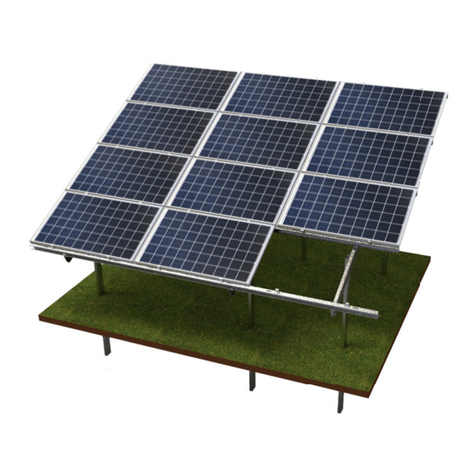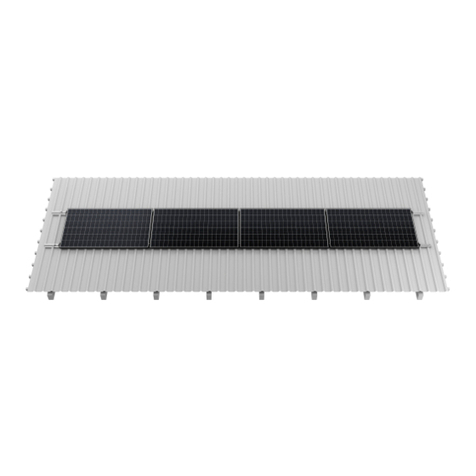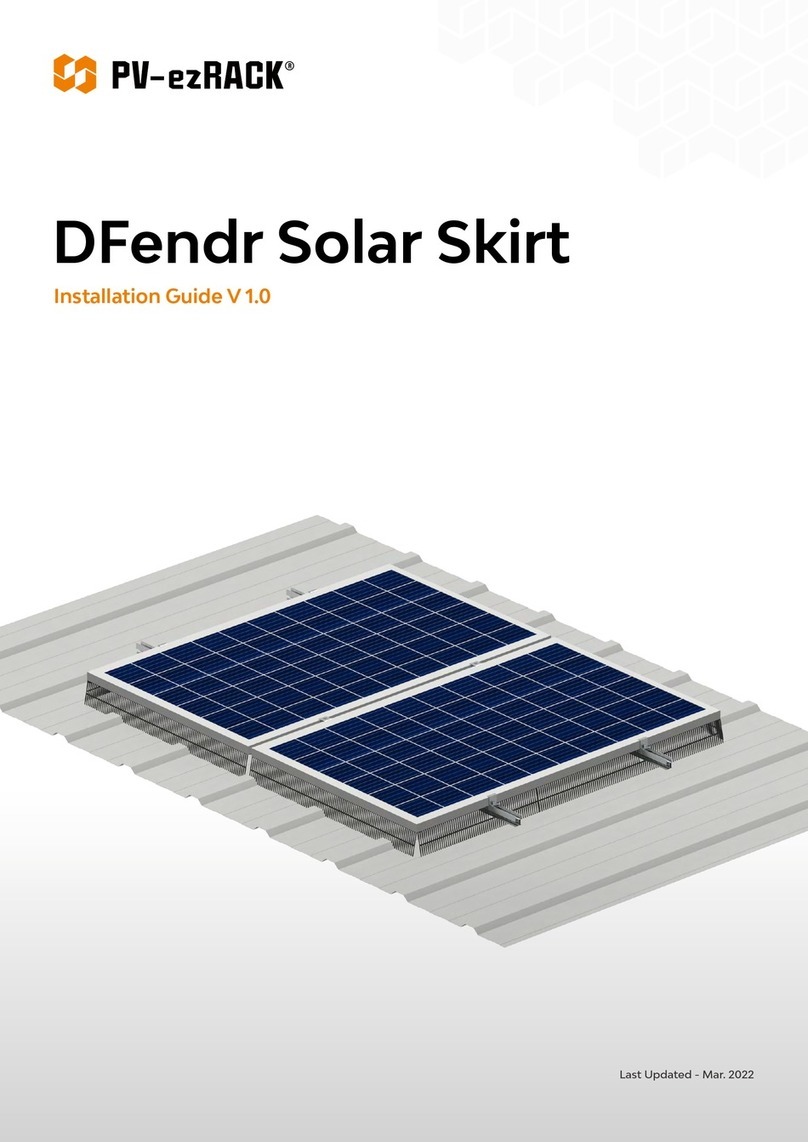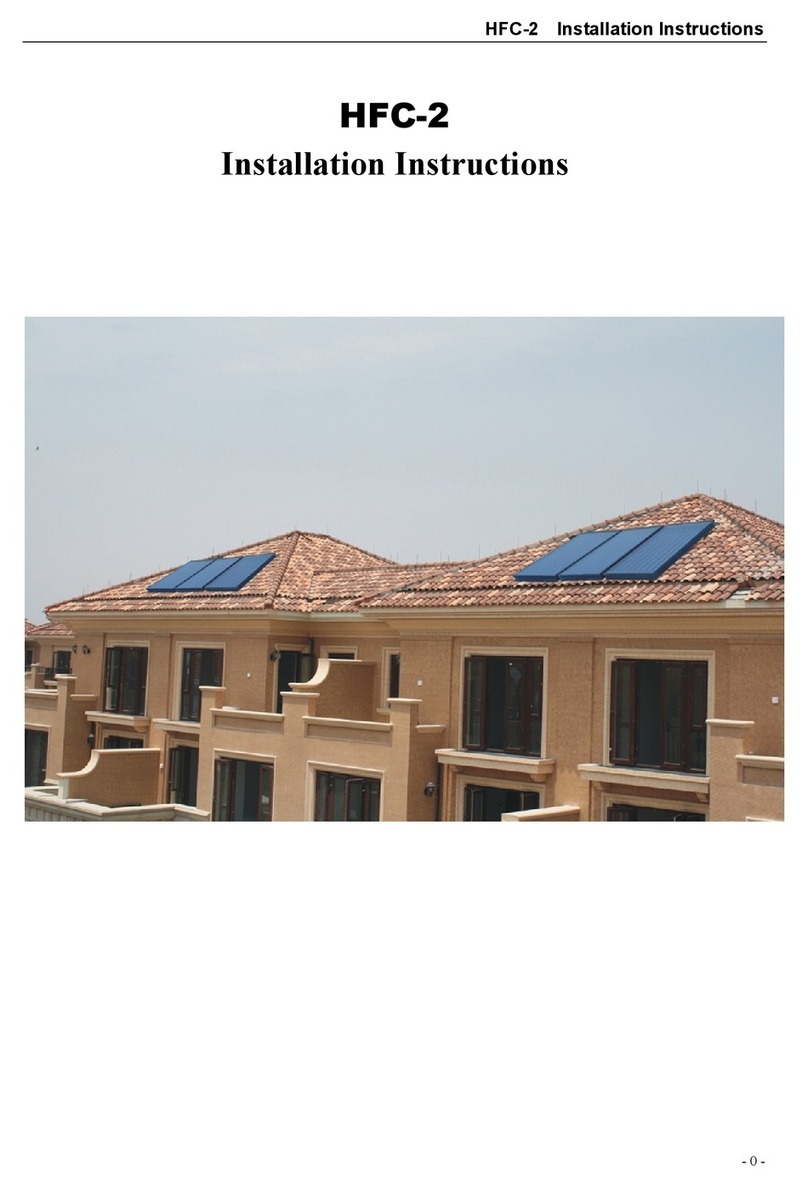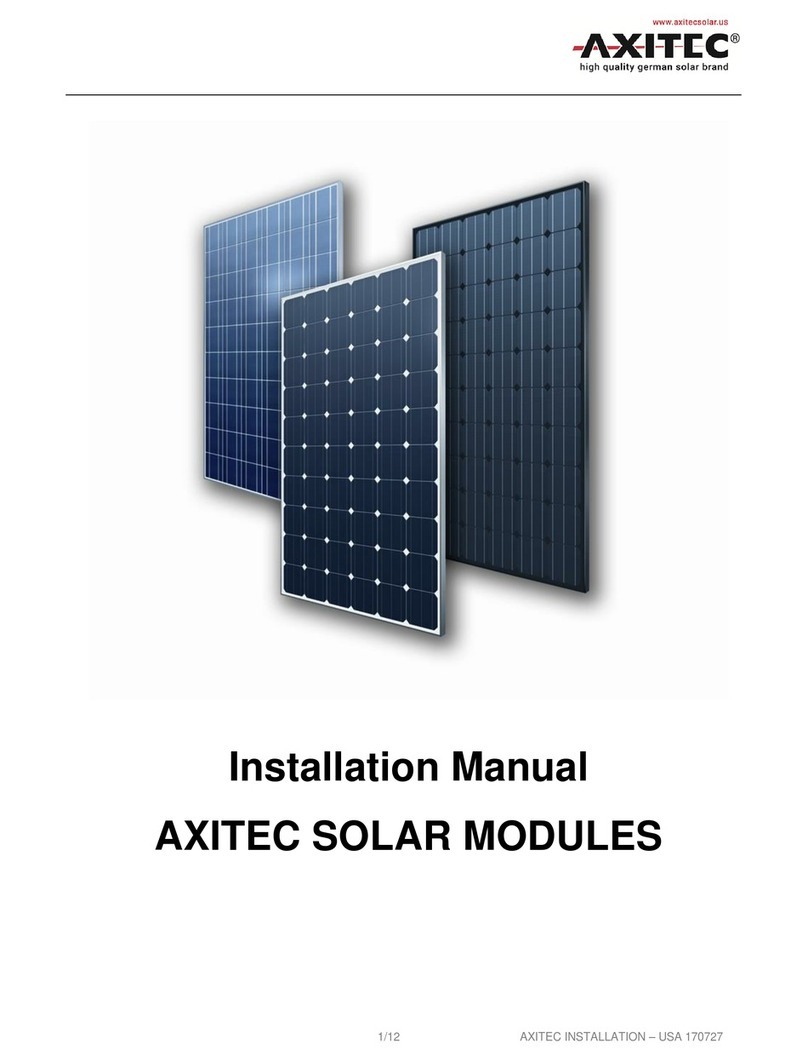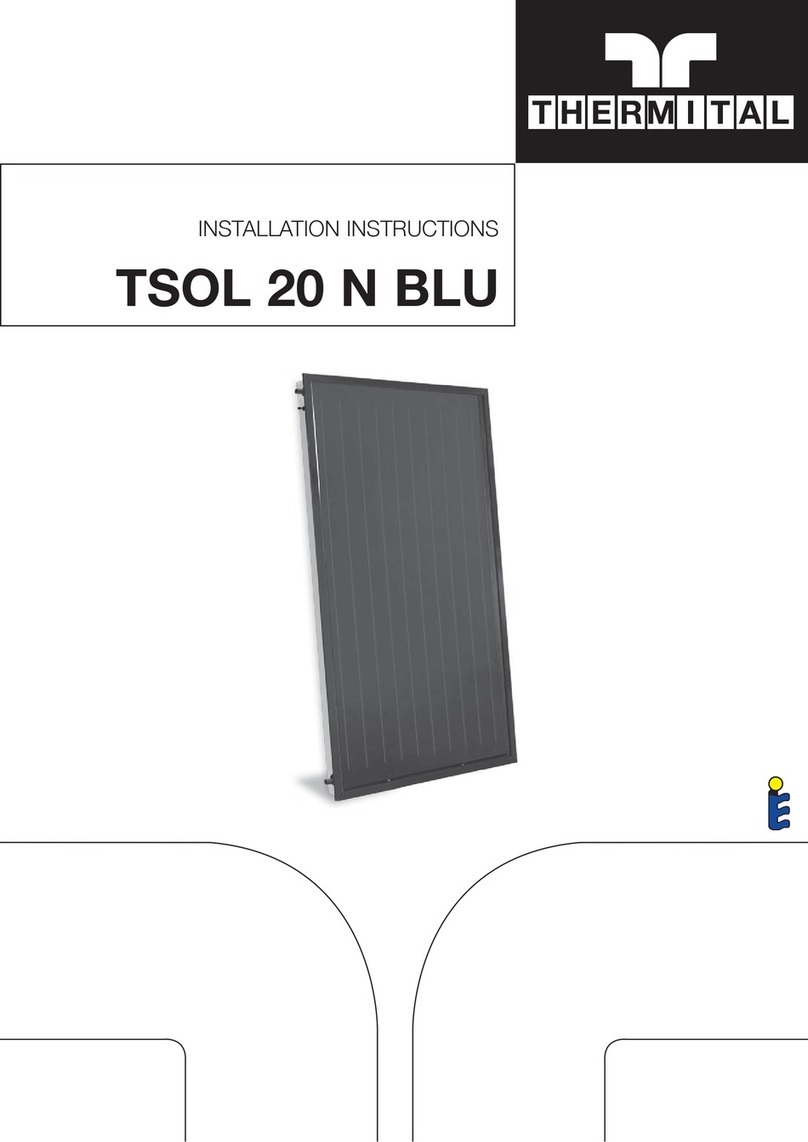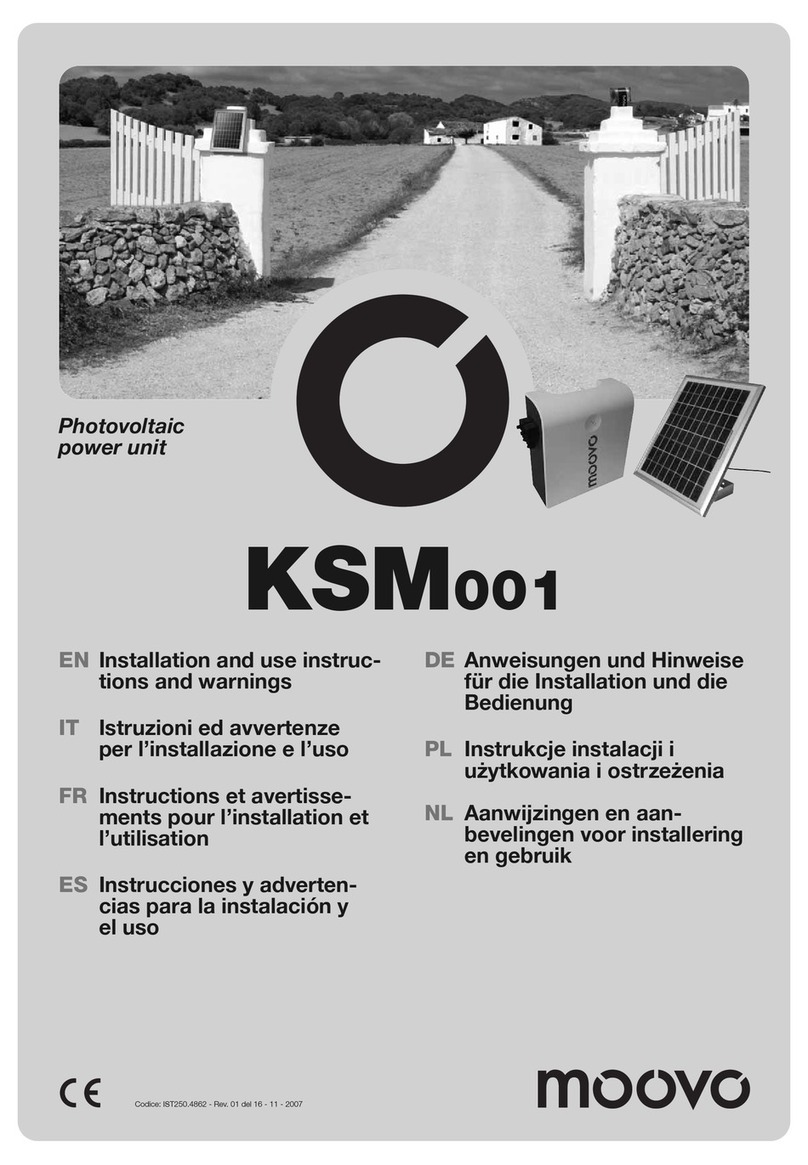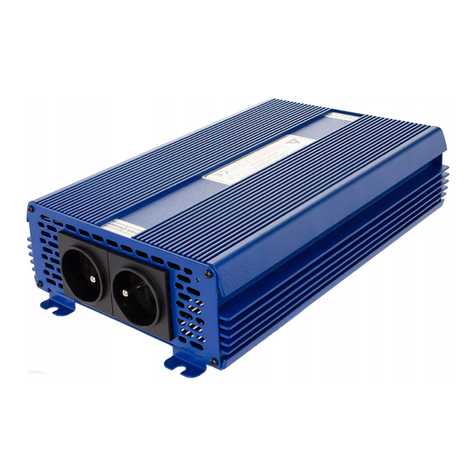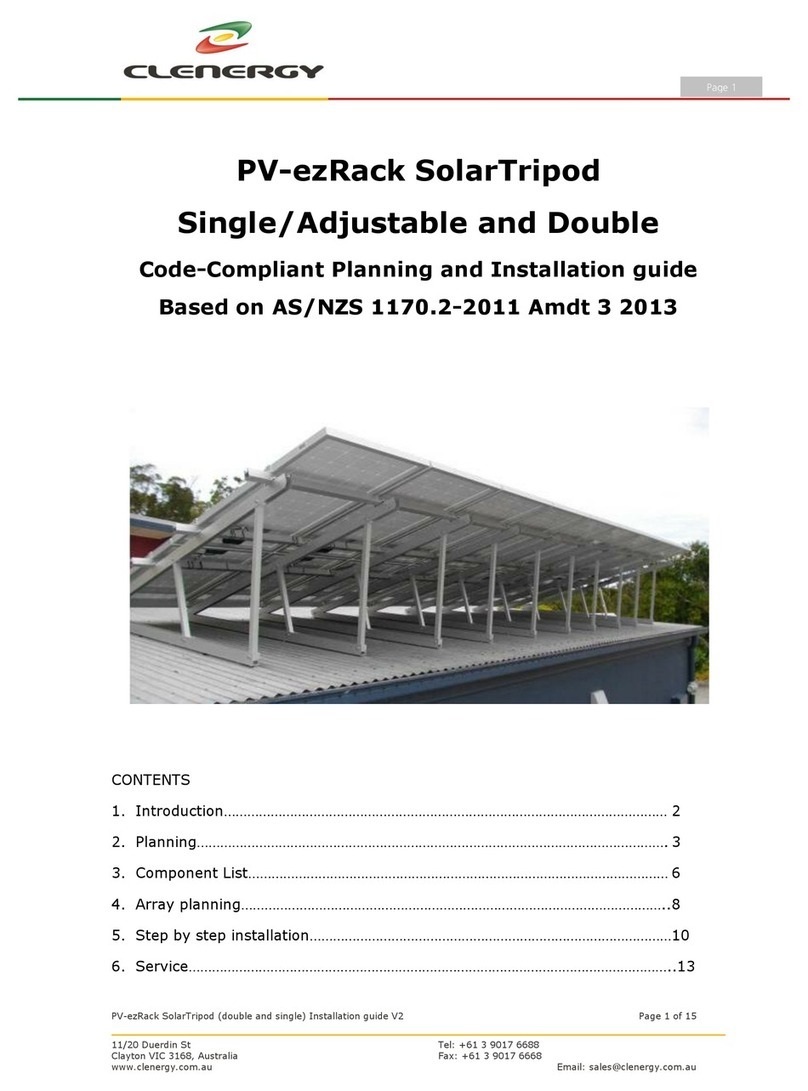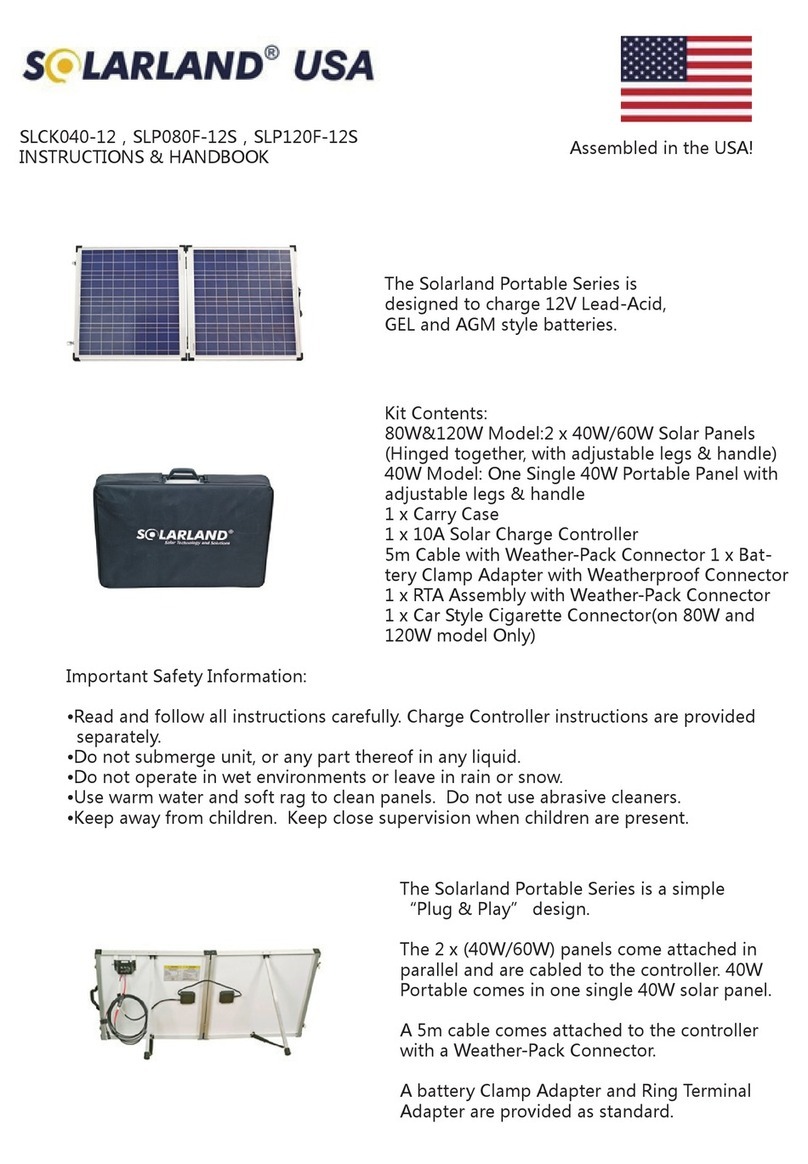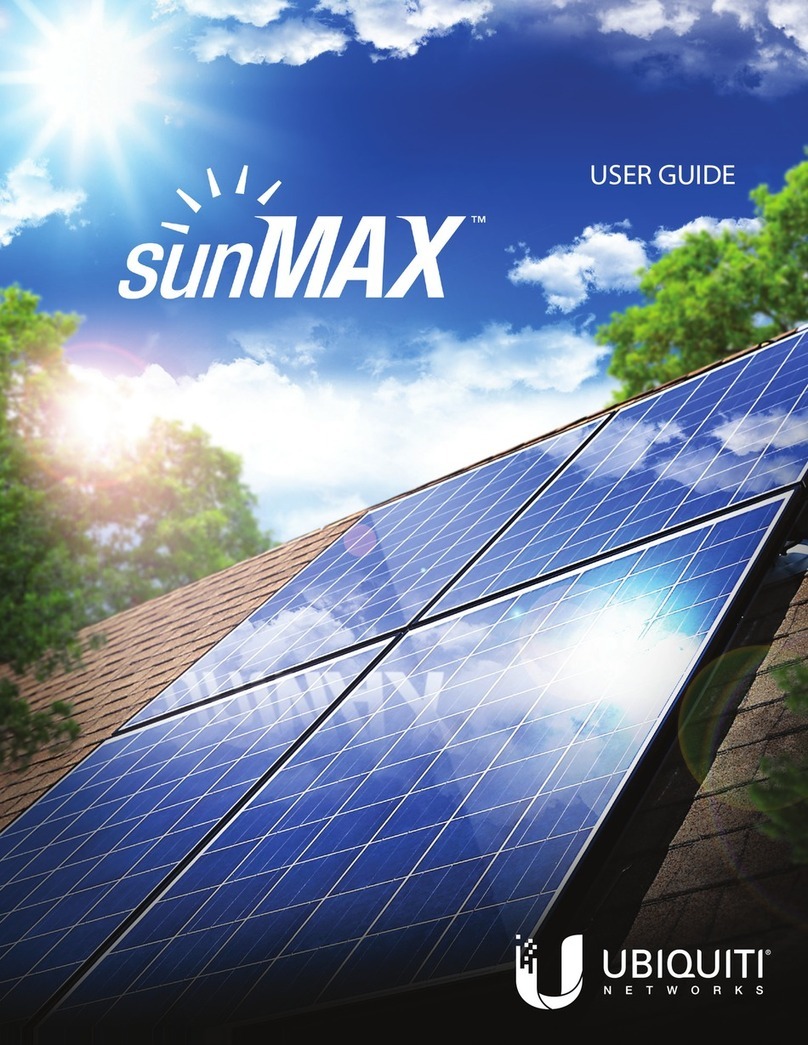Electrical installation
■To avoid galvanic corrosion, all components used must
be compatible with the module material. Damages caused
by galvanic corrosion are not cover under the warranty.
■It is not recommended to use modules with different
configurations (grounding, wiring) in the same system.
■Excessive cables must be organized or fixed in an
adequate way, e.g. attached to the mounting structure by
using non-metallic cable ties or other suitable ties. Solar
cables, connectors and junction boxes should not be
exposed to water and snow, and rain or water submersion
for a long period of time (IP65/67/68).
■For applications requiring high operating voltage several
modules can be connected in series to form a string of
modules; the system voltage is then equal to the sum of
the voltage of each module.
■For applications requiring high operating currents
several strings of modules can be connected in parallel;
the system current is then equal to the sum of the current
of each string of modules.
■The maximum system voltage is 600 volts, 1000 volts or
1500 volts depending on the product family direct current
value according to standards.
■The maximum number of series of connected modules
depends on the system design, type of inverter used and
environmental conditions.
■Based on the maximum series fuse rating of module and
local electrical installation code, always make sure that PV
modules are assembled with the appropriate string fuse
for circuit protection. There is no specific limitation on the
number of modules that can be connected in parallel, the
number of modules is determined by system design
parameters such as current or power output.
■To prevent the cables and the connectors from
overheating, the cross section of the cables and the
capacity of the connectors must be selected to suit the
maximum system short circuit current. The recommended
cable is PV wire with a cross section of at least 4 mm2.
■Caution: do not secure the cables too tight. Any cable
damage caused by cable management system is not
covered under module warranty.
■Always observe the bending radius specified by the cable
manufacturer, which includes the radius after the
connectors.
■When designing large modules arrays connected to a
single inverter, always take into account the resulting
isolation resistance (Riso), which decreases with an
increase in the number of modules in the array. A too low
Riso can results in inverter faults. Please read local
regulations to determine the wire size, type and
temperature.
■The modules are supplied with connectors used for
system electrical connections. It is strongly recommended
to use the original connectors specified in the module data
sheet. Selecting a connector type other than those
specified may invalidate the warranty.
■To ensure reliable electric connection and to prevent
possible intrusion of humidity, two connectors must be
mated and locked together until a click can be heard.
■Long-term exposure to wet environments may cause
connectors' poor connectivity, resulting in current leakage
and poor conductivity which voids the warranty. Proper
management of connector/cable/wire is recommended to
prevent moisture intrusion. Depending on the amount of
humidity, it is recommended to conduct periodic
inspections of the installation system to maintain optimal
module performance.
■The DC current generated by photovoltaic systems can
be converted into AC current and fed into a public grid. As
local public utility policies on connecting renewable
energy systems to the grids vary from region to region,
always seek the advice from a qualified system designer.
Building permits, inspections and approvals by the local
utility facilities are generally required.
■For larger installations, it is recommended to instal
lightning protection following the local requirements and
regulations.
Grounding
For grounding and connecting requirements, please refer
to regional and national safety and electricity standards. If
grounding is required, use a recommended connector type
for the grounding wire.
PV Modules use an anodic oxidized aluminium frame to
resist corrosion, so the module frame should be connected
to the system grounding wire to prevent thunder and
electrical shock.
The frame rails have pre-drilled holes marked with
a grounding sign, these holes should be used for
grounding purposes and should not be used for
mounting the modules.
